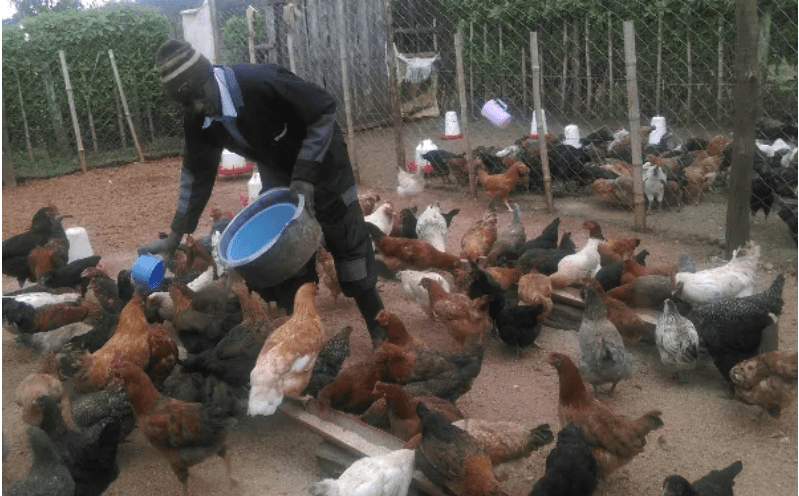Kienyeji Eggs: Growing up in Sabugo , Ol Kalou division, in Nyandarua County, Paul Muchiri Njoroge wanted to be a polutry farmer. While his companions despised farming, he sharpened his skills at a young age. In 2013, he chose to wander into commercial poultry keeping.
“Farming was fun for me unlike my peers who saw it as a punishment. I decided to focus on kienyeji (indigenous) chicken,” says Muchiri.
“There is a huge demand for ‘kienyeji’ chicken products in Kenya and my goal is to be a leader in this area,” says Muchiri.
The 31-year-old started with six chicken and when they began laying eggs, he sold them to buy family products. Muchiri then, at that point, added his brood to 85 birds. So far he has invested Sh179,000 for construction of the chicken house and fencing
He began with purchasing eggs from the Kenya Agriculture Research and Livestock Organization (Karlo). Be that as it may, he presently wants to begin hatching his own eggs; he has as of now bought an incubator at a cost of Sh120,000 with a capacity of 2,132 eggs.
Muchiri sells his eggs locally at Sh600 per tray. The expense however raised to Sh1,000 per tray for the people who want to hatch the eggs.
“Most of my clients are restaurants and farmers who either consume the eggs or hatch them. I haven’t exploited other markets since I cannot satisfy the local market at the moment. I currently have 850 chicken but my target is 5,000 birds by the end of the year to be able to meet to the high demand,” says the father of two.
Just 257 hens are laying eggs currently while the rest are yet to mature fully. His current production is somewhere in the range of 18 and 20 trays in seven days, which earn him somewhere in the range of Sh10,800 and Sh12,000. This comes to around Sh. 48,000.
Muchiri says he uses conventional techniques — generally onions, aloe vera and green pepper — to forestall illnesses.
“I cut the onions into small pieces, mix with a little aloe vera and pepper and add the mixture to the water given to the chicken. I also use EM1 or BM1 which is an effective micro organism that boosts the immune system of my chicken. I try to avoid antibiotics because too much antibiotics make the chicken weaker which means more diseases,” he explains.
“We give vaccines to eight-day-old chicks and to the fully developed chicken, we vaccinate during the onset of the rainy season and the dry seasons. This helps in protecting the brood from the New Castle disease,” he adds.
He feeds his chicken with kienyeji mash (combination of soya beans and sunflower among different components) and supplement with grass, sukuma wiki, cabbages, onions, capsicum and tomatoes to improve on their health and eggs quality.
The endeavor has anyway not been without difficulties including that of getting appropriate feeds.
“Most companies do not manufacture standard feeds and this in the long run affects production. Access to financing is also a challenge,” says Muchiri
“My plan is to have 10,000 chicken for production of eggs and meat. I also want to concentrate on breeding the Scot dumpy breed, locally know ‘Karuru’, as it is a good hatcher, layer and good for meat,” he says.
Muchiri also plans to venture into dairy and strawberry farming. “We should always work hard towards achieving our dreams,” he says



